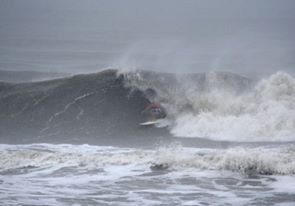Blown Away wrote:zhukm29 wrote:HurricaneEdouard wrote:GFDL and HWRF were the go-tos for intensity on intensity on this board back in 2005-2008, so I'm surprised HWRF's reputation has fallen behind its performance.
What I tend to see pros recommend (or what they should recommend, at any rate) is not relying on any one particular tool for forecasting, but rather pay attention to trends (both model trends with the storm itself since its formation, and climatological trends with storms of similar track so you can compensate for any systemic biases in the models e.g. the tendency for many models to underestimate ridges and overestimate troughs, thus the infamous rightward bias), the consensus aids, and how tightly the ensembles begin to consolidate or not (which reflects actual uncertainty in the forecast, unlike the essentially useless NHC "cone of uncertainty"); the HWRF is good for intensity, the EURO is good for track, but the most accurate forecasts for both track and intensity are the HCCA and TVCN/IVCN consensus tools and the FSU Superensemble (which is generally even slightly more accurate than the NHC official forecast for track and intensity, but all four are roughly comparable).
One reason why HWRF's reputation is so bad is because people don't use it correctly. So many like watching it blow up invests into major hurricanes, but that's not what the model should be used for. If you give HWRF recon data and a defined system, it can perform extremely well.
Except 24 hours ago the HWRF was N of the Big Islands than brush Keys and on to its Cat 5 status.
Bingo about the HWRF. It did poorly up through 12Z yesterday. Also, there's no question that it has a bias of being too strong. Bias doesn't mean it is always too strong but rather that it is usually too strong...too strong much more often than too weak. And sometimes 30-50 mb too strong.
I don't see any reason to praise this model.











